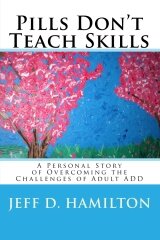 This is a hot topic, and is spoken about online non-stop now. Many scientists and medical experts think food colorings make kids and adults hyper. An FDA panel will meet for two days to evaluate scientific data linking the colorings with ADD. In a related topic, many Canadians are wondering why I have spelled the word coloring, instead of colouring……and a formal inquiry has been launched to find out what has happened to the letter U. Well, not really….it’s just one of those spelling differences between the USA and Canada. For this article, we’ll use the US spelling.
This is a hot topic, and is spoken about online non-stop now. Many scientists and medical experts think food colorings make kids and adults hyper. An FDA panel will meet for two days to evaluate scientific data linking the colorings with ADD. In a related topic, many Canadians are wondering why I have spelled the word coloring, instead of colouring……and a formal inquiry has been launched to find out what has happened to the letter U. Well, not really….it’s just one of those spelling differences between the USA and Canada. For this article, we’ll use the US spelling.
So far, the FDA has said there is no proven link between the colorings (dyes) and hyperactivity in most children. But it said that for “certain susceptible children,” hyperactivity and other behavioural problems may be exacerbated by food dyes.
The meeting is being held in response to a 2008 petition filed by the advocacy group Center for Science in the Public Interest to ban eight dyes. Michael Jacobson, the director of that group, said at the meeting Wednesday that the only reason that dyes exist in food is to trick consumers. Some manufacturers use less dyes in the same foods sold in Europe because of concerns there over hyperactivity.
“Dyes are often used to make junk food more attractive to young children, or to simulate the presence of a healthful fruit or other natural ingredient,” Jacobson said. “Dyes would not be missed in the food supply except by the dye manufacturers.”
The food industry is asking consumers not to rush to judgment. David Schmidt, president and CEO of International Food Information Council Foundation, a food-industry funded group, said dyes help consumers enjoy their food by maintaining or improving appearance.
Some information provided by CBS News Health Watch





